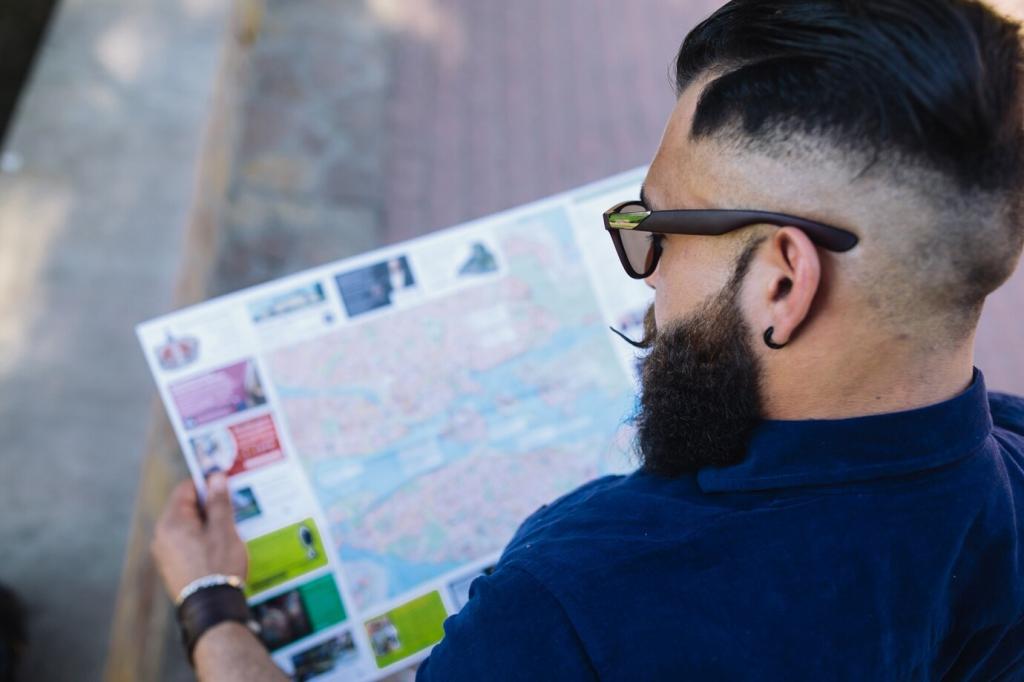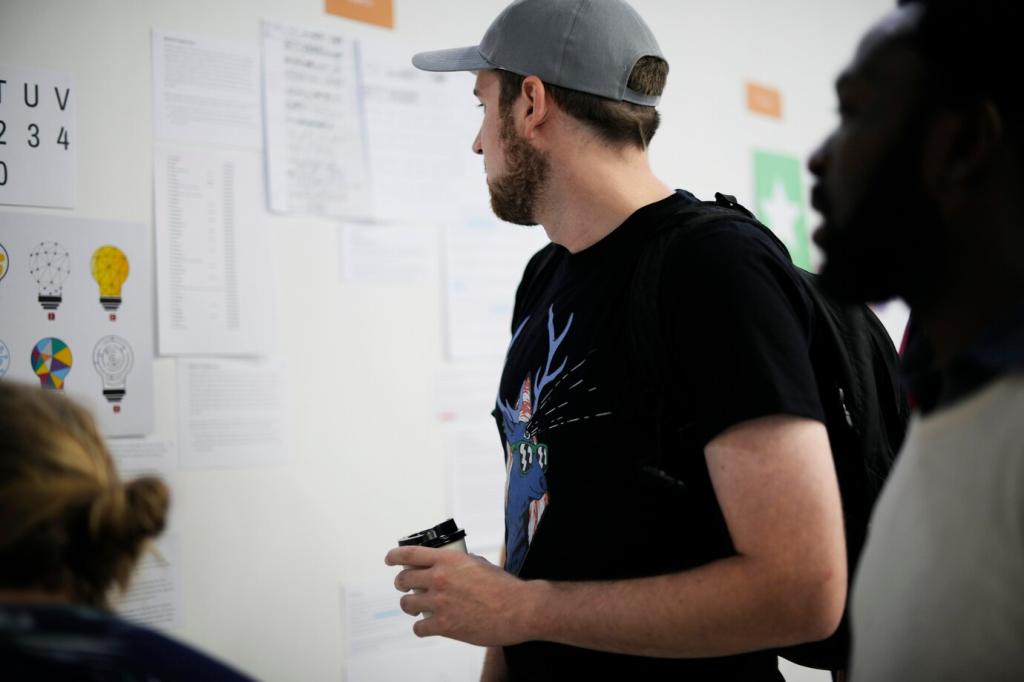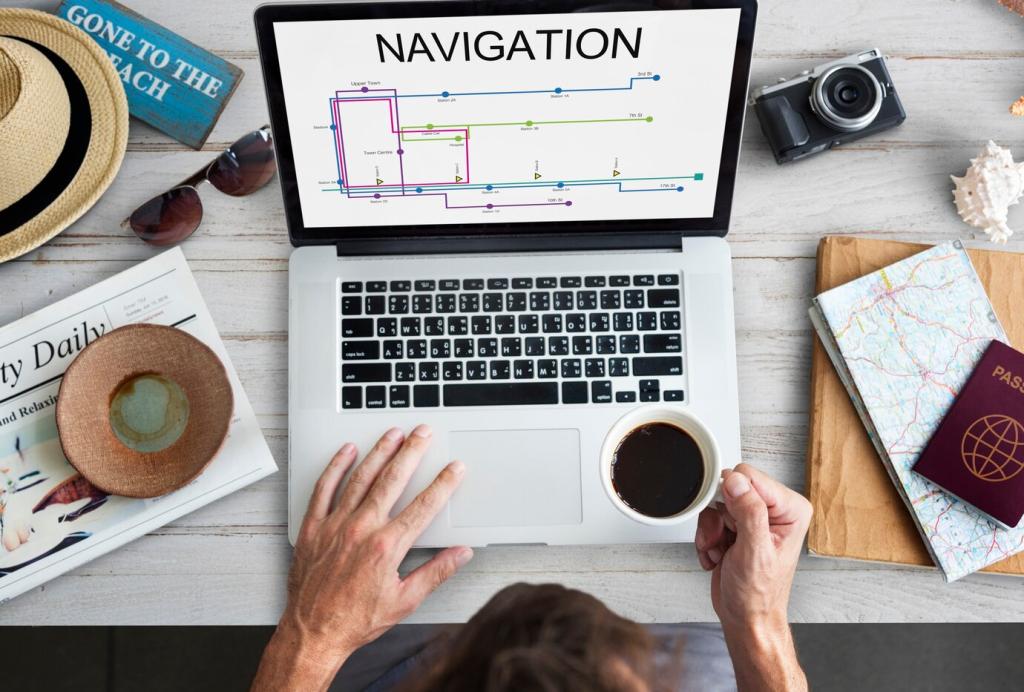Lead with Purpose: Sustainable Practices for Tour Guides
Foundations of Sustainable Guiding
Turn Leave No Trace into group rituals: stay on durable surfaces, pack out micro-trash, keep voices low, and brief guests early. Assign rotating steward roles, gamify success, and celebrate small wins at the finale. Share your best ritual for reinforcing respectful behavior.
Community Benefit at the Heart of Every Tour
Source locally and transparently
Prioritize microenterprises, cooperatives, and Indigenous-owned suppliers for food, crafts, transport, and add-on guiding. Disclose sourcing choices to guests, showing how spending circulates locally. Ask partners what they need this season, then adjust itineraries to meet those needs responsibly.

Waste and Water Stewardship On the Move
Issue reusable bottles, cups, utensils, and cloth napkins at check-in, branded with educational prompts. Offer refill and rinse stations. Collect, sanitize, and restock post-tour. Suggest durable suppliers with repair or take-back programs that truly extend product life cycles.

Waste and Water Stewardship On the Move
Map potable water points, partner with cafes for refills, and carry gravity filters in remote areas. Provide clear signage and a cheerful routine. Explain local water scarcity realities and celebrate refill milestones. Ask subscribers for signage wording that nudged behavior change best.

Mode hierarchy that lowers emissions
Walk whenever feasible, then bike, then shared transit, reserving private vehicles as a last resort. When vehicles are necessary, choose efficient or electric options. Reframe slower travel as deeper immersion, revealing details guests would otherwise overlook entirely.

Clustered, slower micro-itineraries
Design micro-itineraries that cluster attractions within compact zones, weaving in overlooked gems and longer dwell times. Reduced churn means calmer guests and lower emissions. Share a city where clustering transformed your tour quality and improved your guide team’s energy.

Offsetting done responsibly
Treat offsets as a last step after avoidance and reduction. Choose verified projects with community co-benefits and disclose methodologies transparently. Offer an opt-in with context. Ask readers which offset programs earned their trust and why, so we can compare approaches fairly.
Storytelling that Turns Guests into Stewards
Pair every site with a story linking beauty to responsibility: dunes that migrate, murals funding youth programs, reefs recovering after storms. Narratives should invite a small action today and a bigger commitment tomorrow, with tangible steps guests can remember.
Storytelling that Turns Guests into Stewards
Offer opt-in micro-actions like five-minute litter sweeps, refill challenges, or quick polls that shape the route tomorrow. Celebrate participation publicly and kindly. Encourage readers to share a participatory idea that guests genuinely loved and asked to repeat again.


Measuring Impact and Reporting Back
Define meaningful indicators
Track per-guest emissions, liters of water saved, percentage of local spend, and participation in stewardship actions. Set baselines and quarterly targets. Make dashboards visible to staff, and invite travelers to view progress live during or after the tour.
Close the feedback loop
Collect guest feedback on comfort, clarity, and perceived impact within twenty-four hours. Share summaries with partners, then pilot changes quickly. Encourage honest critiques and publish what you learned. Ask which survey question yields the most actionable insight for guides.
Transparent storytelling of results
Publish seasonal impact notes: what improved, what failed, and what you will try next. Pair numbers with photos and quotes. Invite subscribers to a short Q&A where methods, challenges, and collaboration opportunities across regions are discussed openly and constructively.
Safety, Seasonality, and Conservation
Crowd and habitat management
Use timed entries, split groups, and alternative vantage points to relieve pressure on sensitive sites. Teach quiet observation and establish buffer zones. Report trail damage promptly. Share tactics that eased overcrowding without disappointment, keeping wildlife and visitors calmer.


Weather-wise, low-impact plans
Prepare heat, storm, and wildfire contingencies that minimize ecological harm: shade without trampling, rerouting off saturated trails, pausing during nesting periods. Communicate pivots early and empathetically. Ask how you keep trust high while switching plans for safety and habitat.
